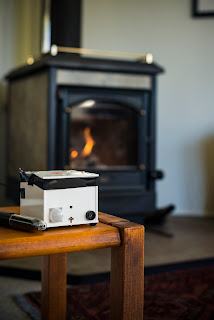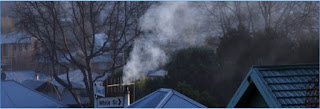What does the PACMAN say?

Our keen tinkerer, Gustavo Olivares, started building the first PACMAN back in 2012, I think. We wanted a device that could not just measure indoor particle levels, but would give some clues as to what was causing and controlling them. After 3 years of tests it was not until last year in Rangiora that we finally got around to using PACMAN for the job it was originally intended. Observing rapid changes in particle levels in real homes in a wood-burning setting. The PACMAN technology is low cost and they are each custom-built by amateurs (we are air quality scientists not electronic engineers). Some of them failed, some reported data that was 'contaminated' (by what, we're not yet sure). But some worked beautifully and did exactly what we wanted. Here's an image of a PACMAN in action. This is real data from one of our participant homes, covering one day. You can see three lines which are levels of measured dust, carbon dioxide and outdoor particle levels (PM10) measured b...

